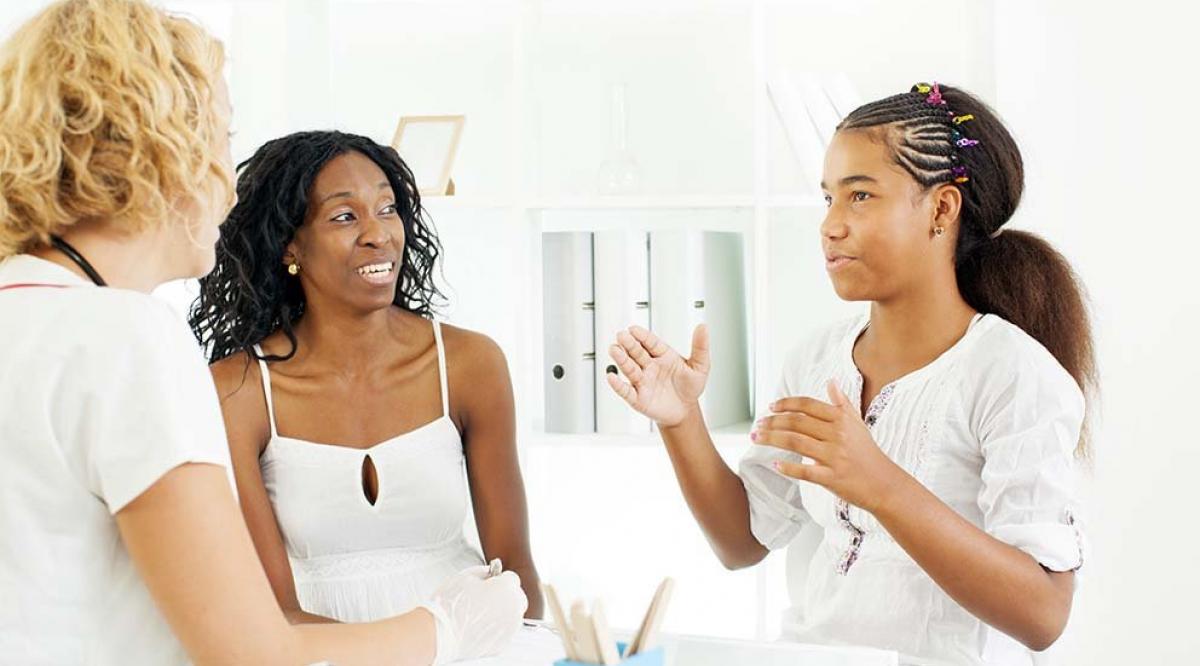Editor’s note: The opinions expressed by the author do not necessarily reflect the opinions of the AAMC or its members.
Each year in the United States, the human papillomavirus (HPV) causes around 31,500 new cancers and more than 6,000 deaths. But a huge portion of HPV-related cancers—over 80%—can be prevented with on-time vaccination. I find it heartbreaking that less than half of teens in this country have received appropriate HPV protection. As physicians, we have a responsibility to recommend this life-saving vaccine to our patients, and to learn effective ways to promote it.
“Of the many factors that influence HPV vaccine uptake, the top one is a strong, clear provider recommendation.”
Of the many factors that influence HPV vaccine uptake, the top one is a strong, clear provider recommendation. So, why aren’t more physicians promoting on-time HPV vaccination?
Some physicians feel uncomfortable talking with families of patients age 11 or 12 about a virus that's transmitted sexually. But it's extremely important to recommend the vaccine on time. Vaccine effectiveness drops significantly after any exposure to HPV. And exposure can happen through many types of intimate activity in addition to intercourse, including oral sex, anal sex, and potentially even kissing. What’s more, because immune responses are stronger in preteens than in teens, vaccination after age 15 is considered so late that an extra vaccine dose is required.
Historically, physicians have also worried that parents might be hesitant about the vaccine. But research indicates that parents tend to be more open to the vaccine than physicians think. It’s worth noting, too, that some parents may interpret a weak-sounding physician recommendation as ambivalence and reject the vaccine. That’s why it's essential for physicians to articulate a clear, strong message about the vaccine and its ability to save lives.
Better communication, better protection
Many evidence-based approaches and easy-to-access tools can help providers explain and promote the HPV vaccine.
At the University of Texas MD Anderson Cancer Center, we created the HPV-Related Cancers Moon Shot™ to bring together surgical, medical, and radiation oncology specialists to conduct clinical research and promote HPV screening and vaccination. One of our goals is to encourage HPV cancer survivors to warn others of the painful, often devastating effects of easily preventable HPV-related cancers.
The Centers for Disease Control and Prevention also offers tips for clinicians to help talk to parents about the vaccine and both the American Academy of Pediatrics and American College of Obstetricians and Gynecologists provide free toolkits with posters, patient handouts, and more. The National HPV Vaccination Roundtable produces materials for specific practitioners, including nurses, medical assistants, and dentists.
One effective approach is bundling the HPV vaccine with other, potentially more familiar vaccines. A provider might say, for example, “Jack is 11 now, so he’s due for three vaccines today to protect against meningitis, HPV cancers, and whooping cough. Do you have any questions about these vaccines?” Note that the focus is on cancer prevention—not a sexually transmitted virus.
When talking with parents concerned about safety, providers can note that millions of doses of the vaccine have been distributed in the United States and numerous studies support its safety and effectiveness. For example, a recent Cochrane Review article evaluated 26 published HPV vaccination trials with more than 73,000 participants and found no increased risk of serious adverse effects.
Other effective approaches to vaccine promotion include standing orders that allow nurses and other healthcare professionals to administer the vaccine even if the physician isn’t present and using electronic medical record messages to remind patients to return for their second vaccine dose.
Providers who see young adults up to age 26 still can help prevent HPV. They should check every patient’s chart and for those patients who haven’t completed the series, explain the value of doing so despite the delay. Even providers who see adult patients can help by reminding parents that the vaccine protects their children.
“It’s certainly our duty to protect our patients, but we can do even more by stepping into the public arena and sharing accurate scientific information.”
It’s certainly our duty to protect our patients, but we can do even more by stepping into the public arena and sharing accurate scientific information. To combat misinformation, we must collaborate and identify ways to amplify our voices. Providers and organizations are increasingly using social media to advance health promotion, and can rely on helpful resources like sample tweets to get the message out. Even more opportunities are available due to the recent launch of the American Cancer Society’s Mission: HPV Cancer Free campaign, designed to achieve the much-needed 80% vaccination coverage by 2026.
I’m saddened when medical students working with me on cervical cancer rounds ask if it’s too late to get the HPV vaccine. It happens far too often these days. Although I still advise them to get vaccinated, I greatly wish they had been protected years ago. It is possible for us to nearly eradicate all HPV-related cancers. Please, do your part to help save lives.

